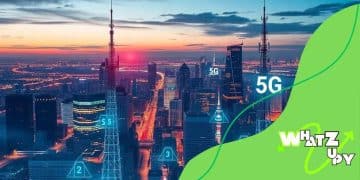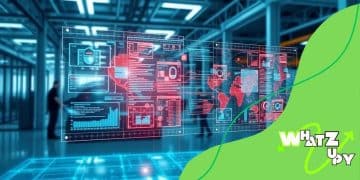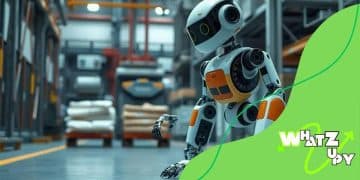Combining AI and IoT for smart urban solutions
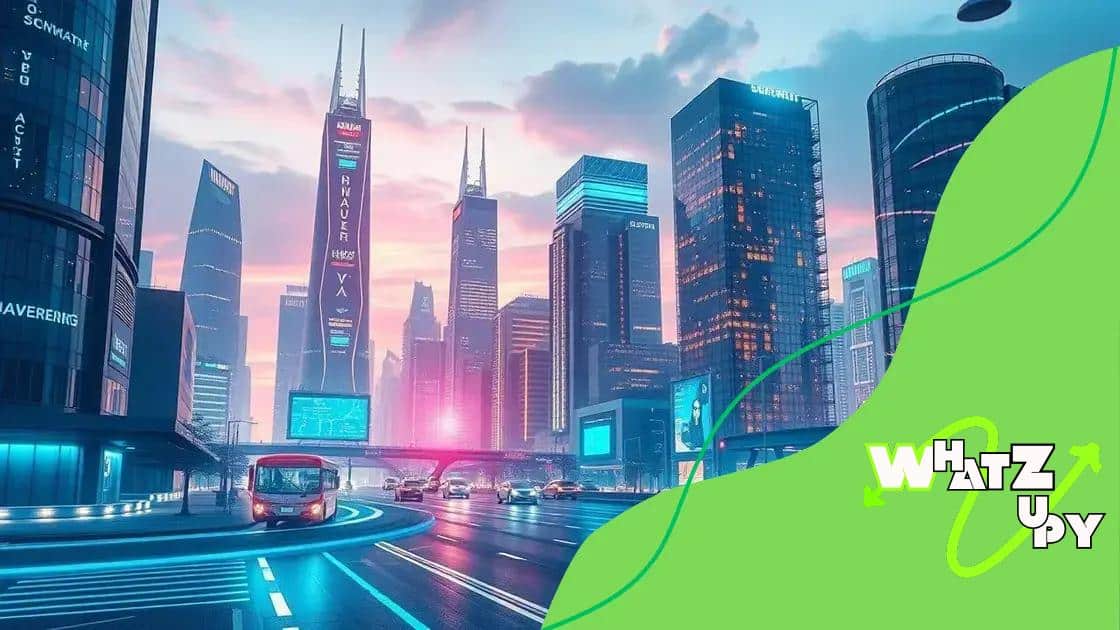
Combining AI and IoT for smart urban solutions enhances efficiency, sustainability, and public safety in cities, making urban living more convenient and improving overall quality of life.
Combining AI and IoT for smart urban solutions is transforming the way we experience city life. Have you ever wondered how technology can create smarter and more efficient urban environments? Let’s dive into how these technologies work together.
Understanding AI and IoT technologies
The combination of AI and IoT technologies is revolutionizing various sectors, making our lives easier and more efficient. Understanding how these technologies function together is crucial for grasping their potential impact on our urban environments.
What is Artificial Intelligence?
Artificial Intelligence refers to the simulation of human intelligence in machines. These systems can learn, reason, and make decisions. Examples include speech recognition and data analysis, which help businesses optimize their operations.
What is the Internet of Things?
The Internet of Things connects everyday devices to the internet, allowing them to collect and exchange data. Think of smart thermostats or wearable health monitors that gather information to enhance user experiences.
- Smart devices communicate in real-time.
- IoT enables automation of tasks.
- Data is analyzed for better decision-making.
- Devices improve efficiency and reduce energy costs.
Combining AI and IoT results in smarter systems. For example, smart traffic lights use AI algorithms to adjust timings based on real-time traffic data collected by IoT sensors. This integration leads to smoother traffic flow and reduced congestion.
Moreover, AI-driven analytics of IoT data can uncover insights that help improve urban infrastructures. Cities can predict maintenance needs for public assets and reduce waste management costs. This approach enhances the quality of urban life.
The synergy between these technologies fosters an ecosystem where data is not just collected but actively utilized to inform and improve city services.
Benefits of integrating AI and IoT in cities
Integrating AI and IoT in cities brings numerous benefits that enhance both the efficiency of urban systems and the quality of life for residents. These smart technologies work together to create solutions that improve various aspects of city living.
Improved Efficiency in Services
One major advantage is the improvement in service delivery. For instance, platforms that analyze data from IoT devices enable cities to optimize public transport routes and reduce travel times. Residents enjoy faster services, making their daily commutes less stressful.
Enhanced Public Safety
Smart cities utilize AI for better public safety measures. Surveillance systems equipped with AI can monitor city areas in real-time, helping law enforcement respond quickly to incidents. This proactive approach can lead to safer neighborhoods.
- Real-time crime detection and response.
- Better emergency services management.
- Improved disaster response planning.
Additionally, the integration of these technologies helps in efficient resource management. Cities can monitor usage of water, electricity, and waste in real-time; by analyzing this data, they can make adjustments that lead to significant resource savings. Thus, both costs and environmental impacts are reduced.
Moreover, when AI analyzes data from IoT sensors, it provides valuable insights that help city planners make informed decisions. This data-driven approach fosters sustainable urban growth while addressing residents’ needs effectively.
In conclusion, the fusion of AI and IoT creates a smarter urban landscape that not only increases operational efficiencies but also elevates the living standards of citizens.
Real-world examples of smart urban solutions
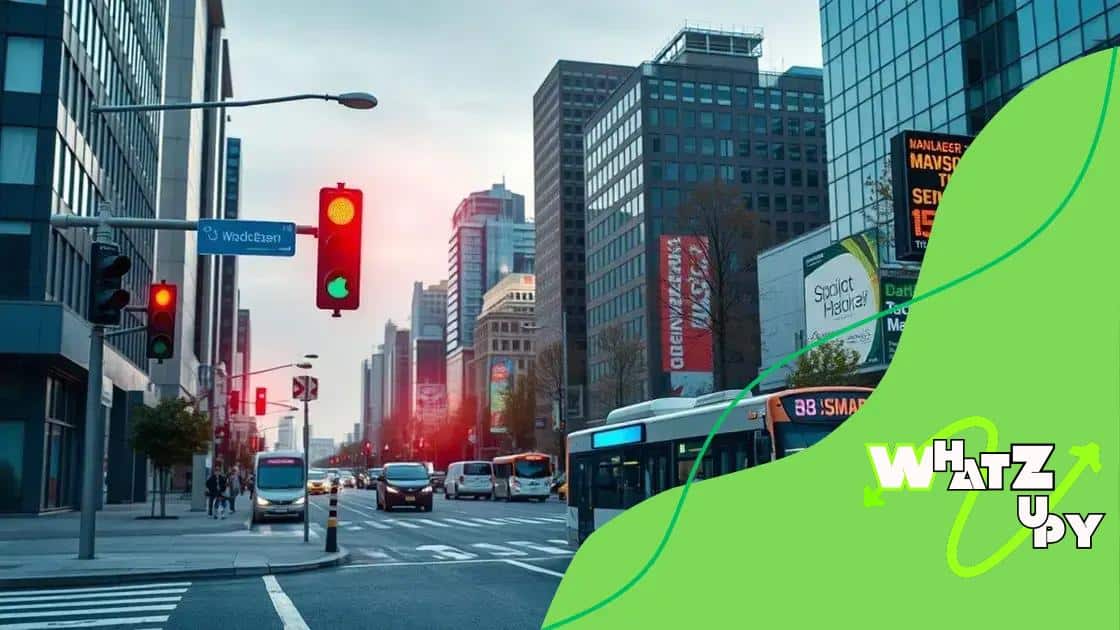
Real-world examples of smart urban solutions illustrate how cities worldwide are utilizing technologies like AI and IoT to enhance urban living. These initiatives not only improve efficiency but also create more sustainable and livable environments.
Smart Traffic Management
One notable example is smart traffic management systems. Cities like Barcelona have implemented IoT sensors to monitor traffic flow and adjust traffic light timings accordingly. This reduces congestion and improves air quality, benefiting both commuters and the environment.
Waste Management Solutions
Another innovative solution can be seen in smart waste management. In cities such as Seoul, smart bins equipped with sensors notify waste collection services when they are full. This helps optimize collection routes, save time, and cut down on fuel consumption.
- Improved collection efficiency.
- Reduced operational costs.
- Minimized environmental impact.
Similarly, smart grids in cities like San Diego demonstrate the integration of AI and IoT to enhance energy distribution. These grids collect real-time data on energy usage, allowing utilities to manage resources more effectively, predict demand, and reduce outages.
Additionally, cities are adopting smart public transport systems. For instance, Washington, D.C. has implemented real-time tracking of buses and trains, enabling users to plan their commutes with greater accuracy. Riders can receive updates via apps, improving their overall travel experience.
As these examples show, smart urban solutions are not just concepts; they are effectively improving city infrastructure, enhancing the quality of life for residents, and paving the way for future innovations.
Challenges to implementing smart urban technologies
Implementing smart urban technologies can significantly improve city living, but several challenges need to be addressed. These challenges can affect the successful integration of AI and IoT in urban environments.
Infrastructure Limitations
One major challenge is the existing infrastructure. Many cities have outdated systems that do not support the new technologies. Upgrading old infrastructure can be costly and time-consuming. This can hinder the smooth rollout of smart solutions.
Data Privacy and Security
An essential concern in the implementation of these technologies is data privacy. With more devices connected to the internet, the risk of data breaches increases. Ensuring that personal information is protected is crucial for gaining public trust.
- Implementation of strong encryption methods.
- Regular security updates for devices.
- Transparency in data usage policies.
Moreover, there is often a lack of standardization among different technologies. Various IoT devices may not communicate effectively with one another. This can lead to inefficiencies and higher costs in maintaining multiple platforms.
Additionally, funding can be another barrier. Smart city projects often require significant investment from both public and private sectors. Securing funding and aligning stakeholders can be complex and challenging.
Lastly, public acceptance and engagement play necessary roles in the deployment of smart technologies. Residents need to see the benefits and feel comfortable with changes in their environment. Education and communication are vital to achieving this positive engagement.
The future of smart cities with AI and IoT
The future of smart cities heavily relies on the integration of AI and IoT. As technology continues to advance, urban areas are expected to evolve into highly optimized environments where efficiency and sustainability are prioritized.
Data-Driven Decision Making
One significant aspect is the shift towards data-driven decision-making. Smart cities will leverage data collected from various IoT devices to analyze urban trends. This analysis will enable city planners to make informed decisions that benefit residents and businesses alike.
Sustainable Urban Development
In addition, sustainability will be a key focus. Future smart cities will incorporate renewable energy sources and energy-efficient designs. By using AI to manage energy consumption, cities can reduce carbon footprints and promote greener living.
- Smart grids to optimize energy distribution.
- Efficient waste management systems.
- Green spaces integrated into urban planning.
Moreover, AI will enhance public services. Real-time analytics from IoT devices will improve emergency response times and public safety measures. For example, smart surveillance systems can alert law enforcement to incidents, allowing for quicker intervention.
Community engagement will also play a vital role in the future of smart cities. By involving residents in planning processes, cities can ensure that solutions meet the needs of their populations. Digital platforms can facilitate feedback and ideas from citizens, creating a more inclusive urban environment.
Overall, the combination of AI and IoT holds incredible potential for the future of urban living, making cities smarter, more efficient, and more livable for everyone.
FAQ – Frequently Asked Questions about Smart Cities with AI and IoT
What are the main benefits of smart cities?
Smart cities improve efficiency, enhance public safety, and promote sustainability, providing a better quality of life for residents.
How do AI and IoT work together in urban environments?
AI analyzes data collected by IoT devices to optimize services like traffic management, energy use, and public safety.
What challenges do cities face when implementing smart technologies?
Challenges include outdated infrastructure, data privacy concerns, funding issues, and the need for community engagement.
How can residents participate in the development of smart cities?
Residents can offer feedback through digital platforms, attend community meetings, and engage with local governments to ensure their needs are met.
